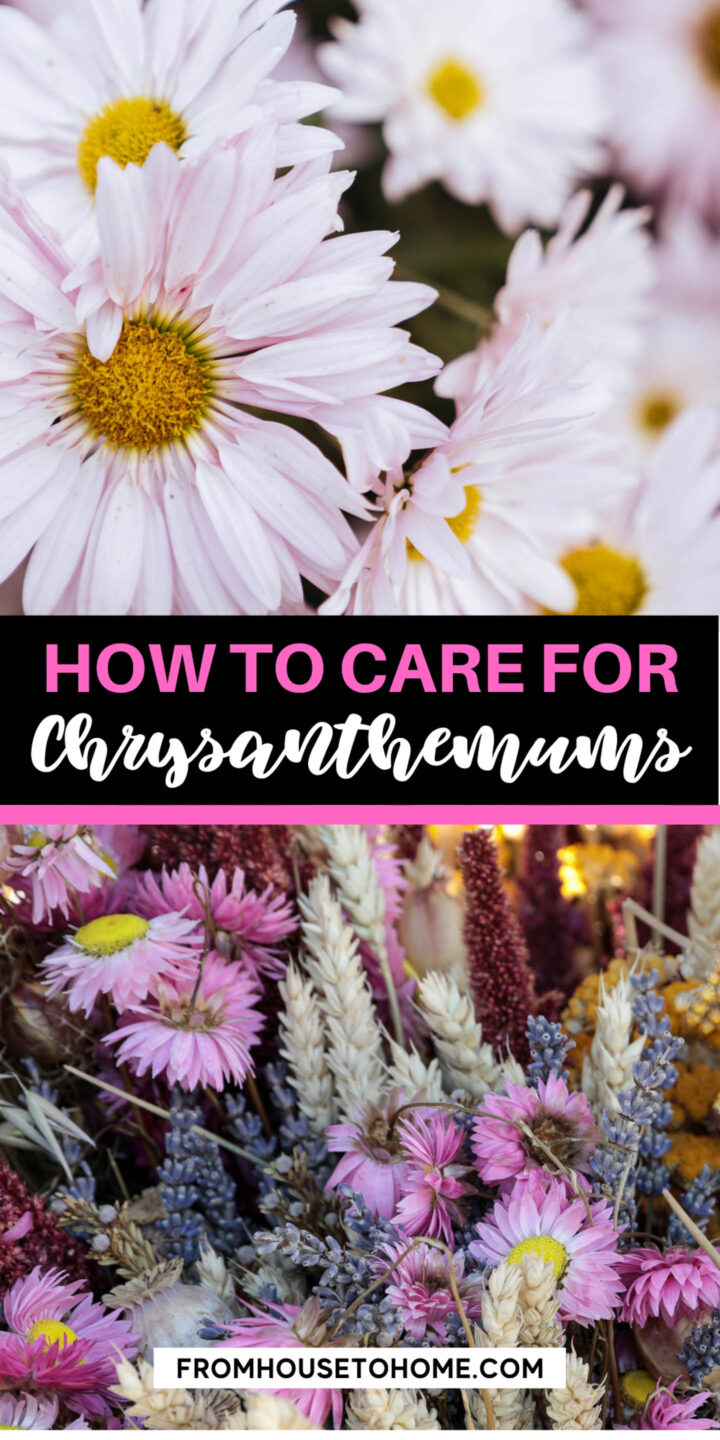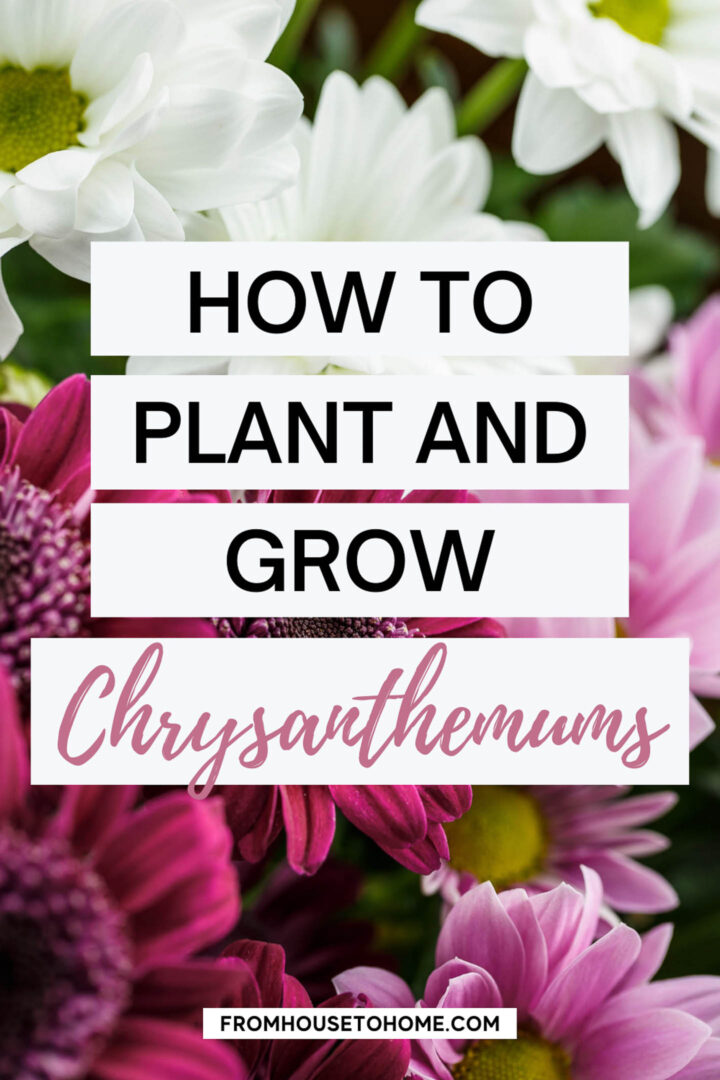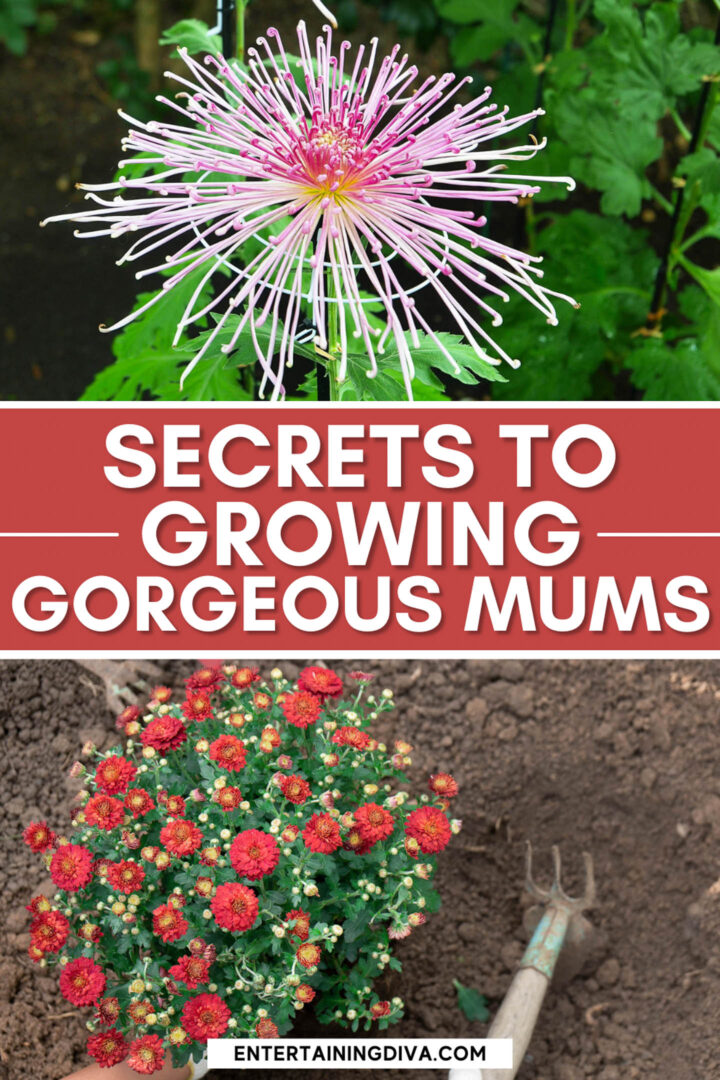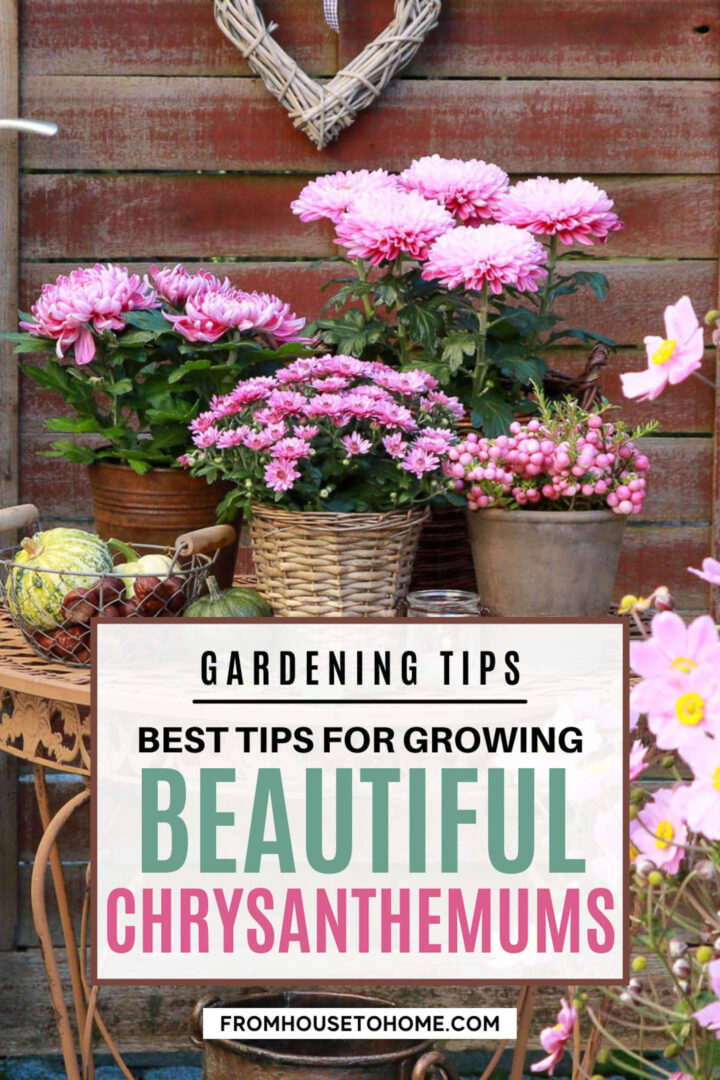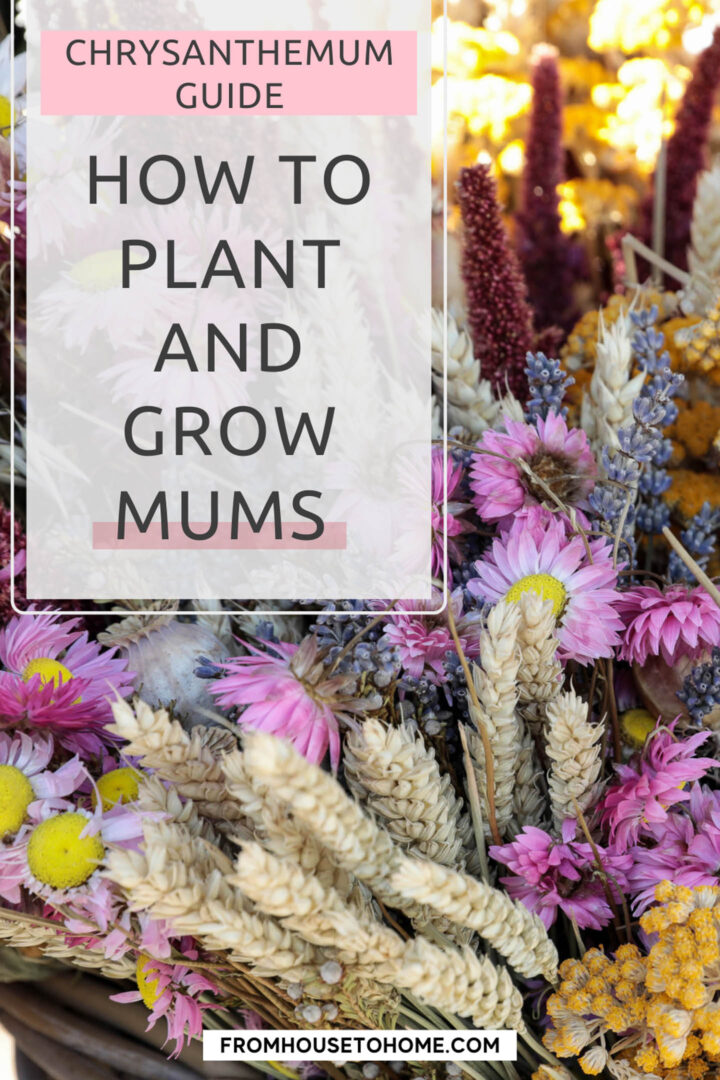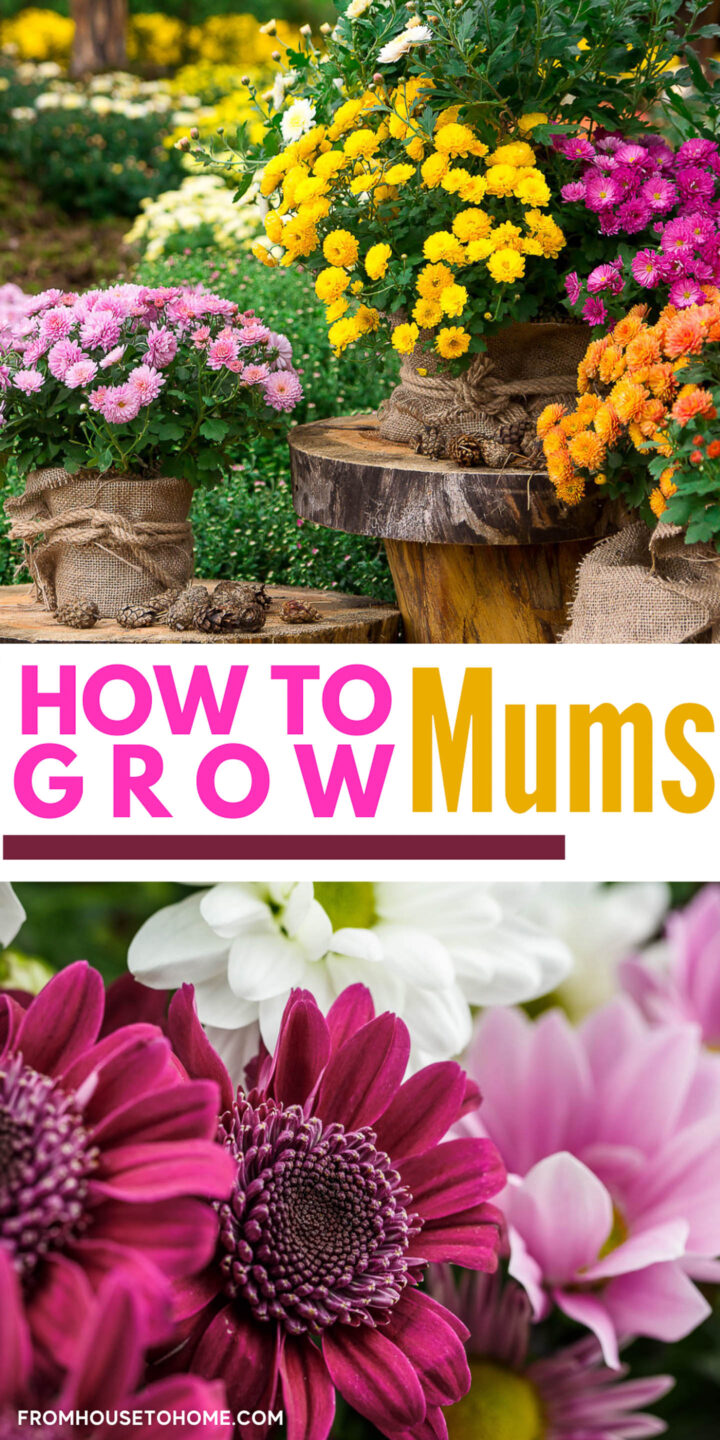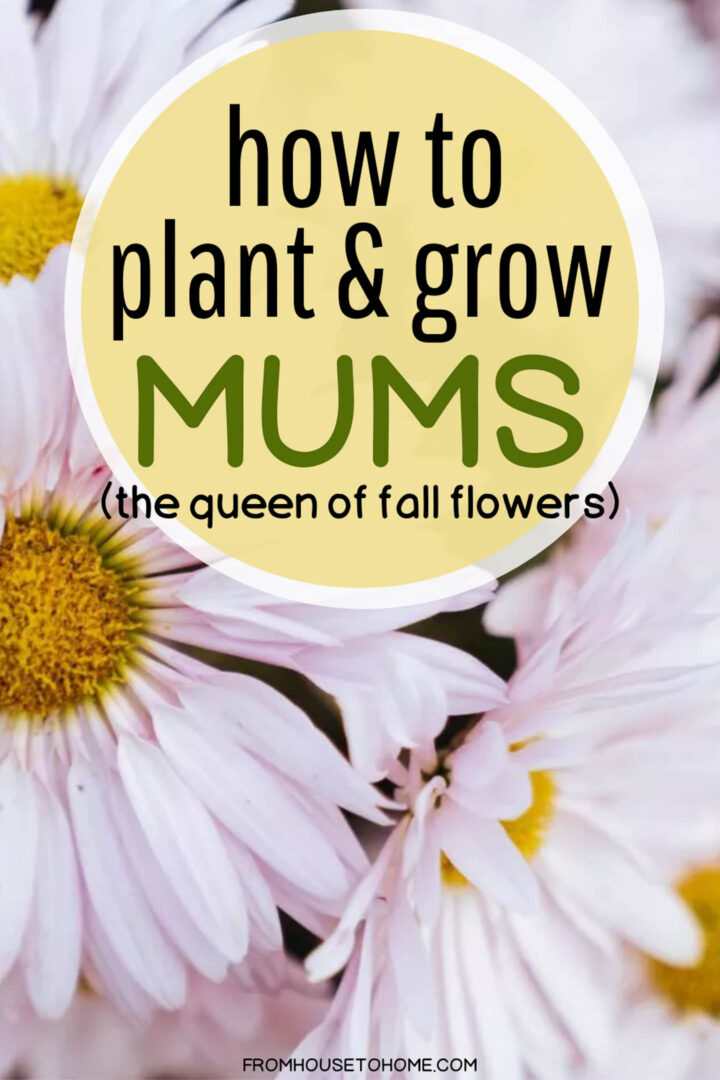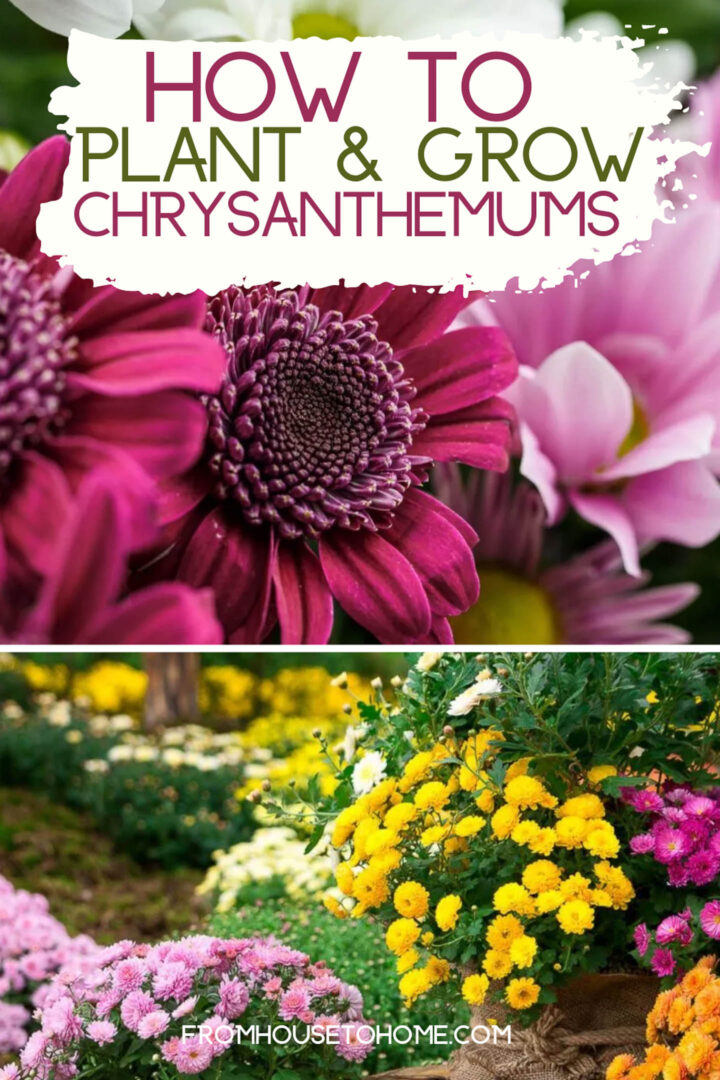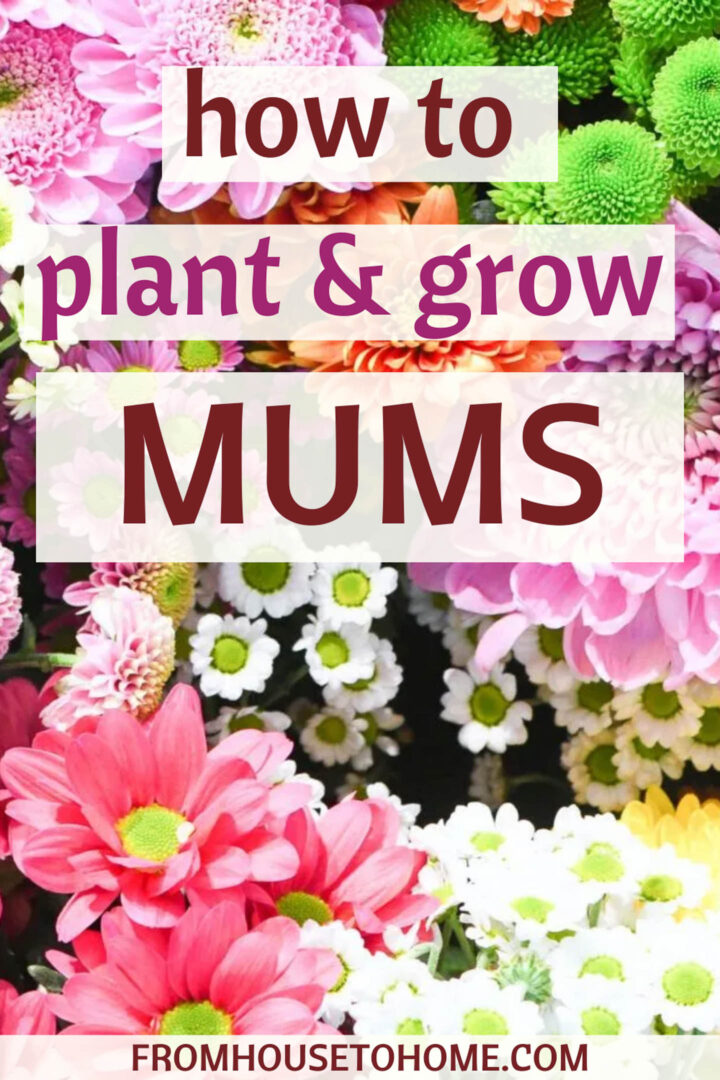How To Plant and Grow Chrysanthemums
Chrysanthemums are a beautiful flower that is perfect for fall. They are easy to care for and come in many different colors and shapes, which makes them great for any garden design. We’ve put together our best tips on how to plant and grow chrysanthemums so you can have a beautiful garden full of blooms this autumn!
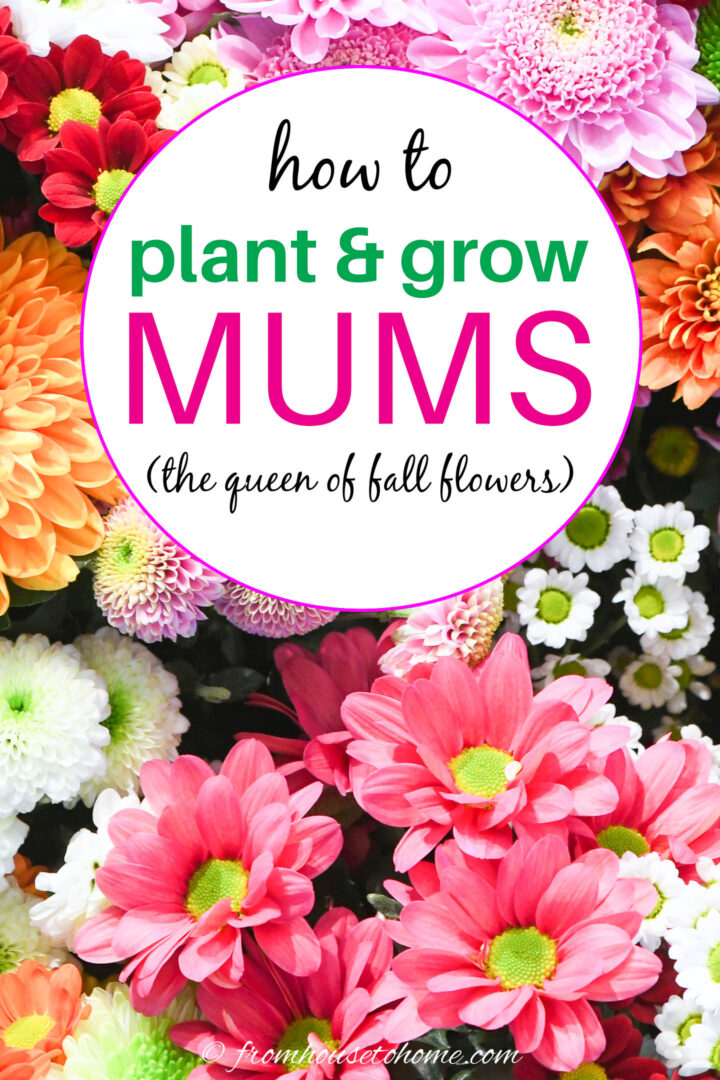
Looking for a fall flower that is beautiful and doesn’t need much care? Chrysanthemums are the perfect plant.
In fact they are so perfect, that they are second only to roses in popularity.
That also means that some people think Mums are a little boring. After all, you see them everywhere! But I’m here to tell you that they don’t have to be.
With so many colors, flower shapes and varieties available, you’re sure to find at least one that will add some pizzazz to your garden at a time when most other plants are done for the season.
So I’ve put together my best tips on how to grow chrysanthemums and some of my favorite types, so your garden can be a showstopper this fall.
All About Mums
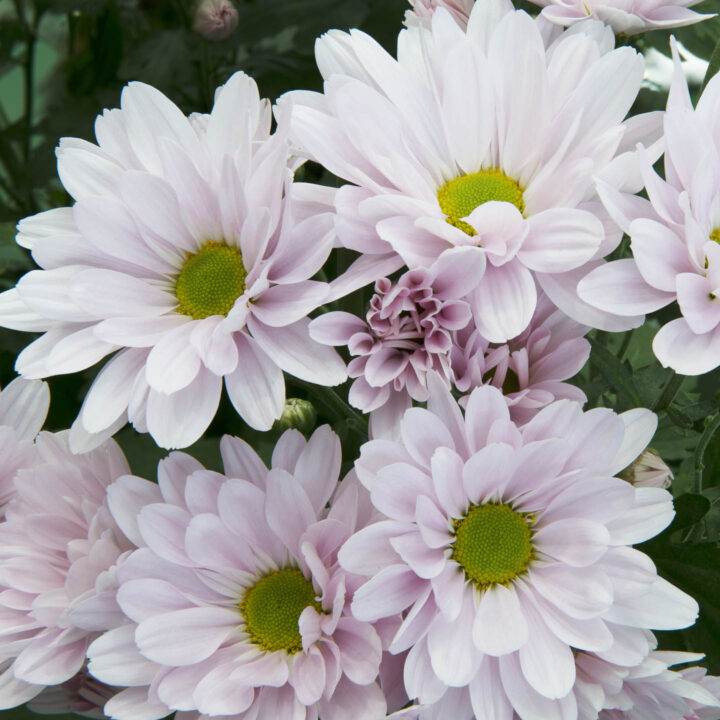
Chrysanthemums (or Mums as most people call them) are from the same plant family as daisies. And they are just as easy to grow.
History
The chrysanthemum has a long and rich history.
First cultivated in China as an herb, it was used primarily to add flavor to salads or brewed into tea for its soothing properties.
The Japanese later adopted the flower and were so enamored with it that they honored them by using them on Emperor’s official seal and crest.
This popularity continued when Europeans first discovered this delicate beauty during the 17th century where they grew fondly attached until eventually making a place among us all here in America!
Zones
When grown as a perennial, these beautiful plants do best in zones 3 to 10 depending on the variety.
However, they are often grown as annuals and discarded at the end of the season, in which case the zone doesn’t matter much.
Flower Colors
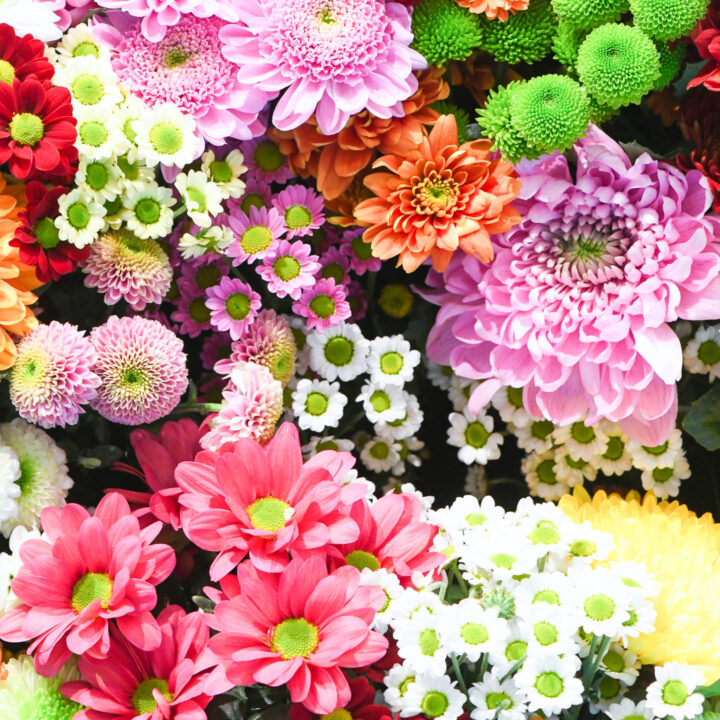
The chrysanthemum flower comes in almost every color of the rainbow except for blue. This includes: yellow, pink, purple, red, white, green and many shades of orange.
When Do They Bloom?
Mums are one of the most common plants for fall flowers, often blooming from August until November.
Deadheading the flowers after the first round of blooms will encourage a second round.
Size
The thing that makes chrysanthemums different than other fall flowers is the many unique sizes and forms. They can range anywhere from 6” to over 5 feet tall depending on the variety.
However most standard garden mums are 2′ to 3′ tall and wide, with flowers that range in size between 1″ and 4″ wide.
How to Grow Chrysanthemums
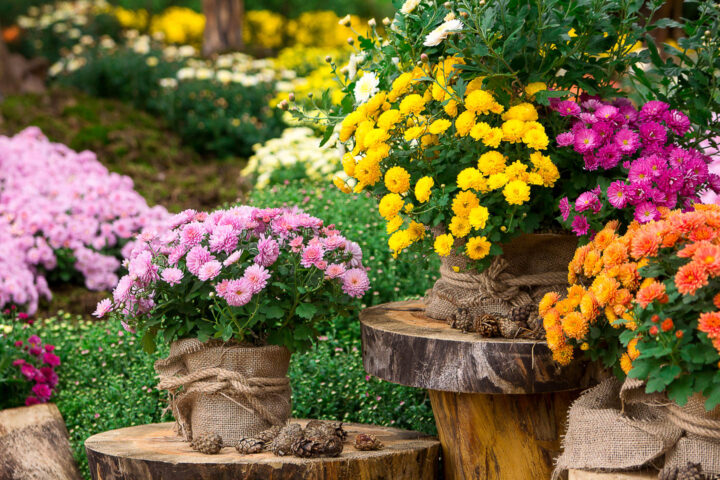
Zones: 3 to 10
Light: Full sun to partial shade
Bloom Time: Late summer to fall
Height: 2′ to 3′
Spread: 2′ to 3′
Location
If you are growing Mums as perennials, they will need at least 6 hours of direct sunlight per day in order to thrive.
Having said that, they can survive in part sun, but may get somewhat spindly and will likely have fewer blooms.
Sunlight is important to new growth, so if you are trying to grow mums in partial shade you will need to make sure that they receive a lot of light at the beginning of the season.
Mums that are being treated as annuals can be grown anywhere since they are usually in place for only a few weeks.
Soil
The best soil for growing mums is a rich and well-draining soil that is slightly acidic.
You will want to make sure that it doesn’t contain too much clay as this will cause the roots of the plant to suffocate and die.
If you have heavy, sandy or gravelly soil (or your soil pH is too high or low), you should work in some peat moss, organic matter or other nutrient dense material into the soil to help keep it moist.
When to plant Mums
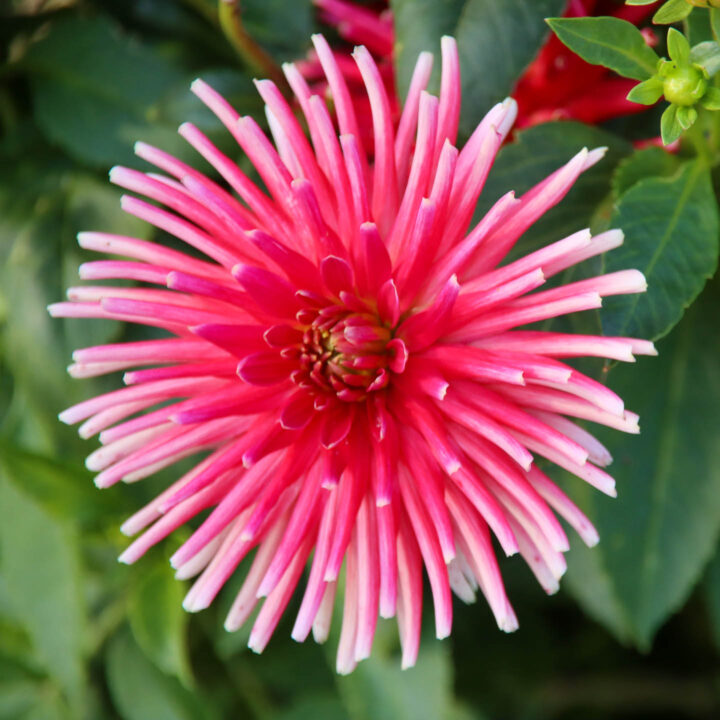
Ideally, Chrysanthmums should be planted in the spring a few weeks after the last frost date. This gives them enough time to establish strong roots that can support lots of blooms come fall.
However, they often aren’t available in garden centers until the late summer. In which case, look for larger sized pots that have provided room for the Mums to grow.
If you want to transplant potted Mums into the garden to grow as perennials, do this at least 4 to 6 weeks before the first frost date to give them time to get used to their new location.
Note that many florist-variety Mums may not survive the winter outside because they are not as hardy for the cold weather.
How to plant Chrysanthemums
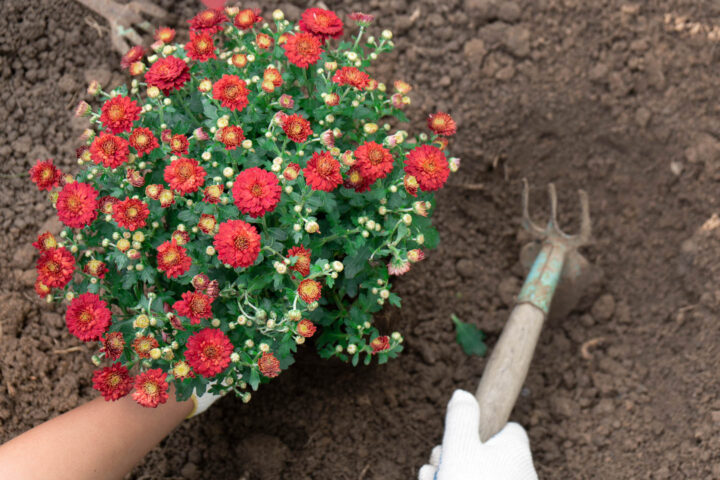
To plant Chrysanthemums, dig a hole that is larger than the root ball. If you have clay or sandy soil, add organic matter such as compost or peat to the existing soil to help with drainage.
Plant the mums at exactly the same depth they were in the pot to avoid water collection around the stems.
I recommend planting at least 3 of the same kind in a group to create a drift of color. This creates more of a statement in your fall garden than individual plants here and there will.
Space the plants 18 to 24 inches apart to give them room to grow.
For larger varieties, install support structures such as stakes, and try not to walk in mum beds to avoid compacting the soil.
How to grow from seed
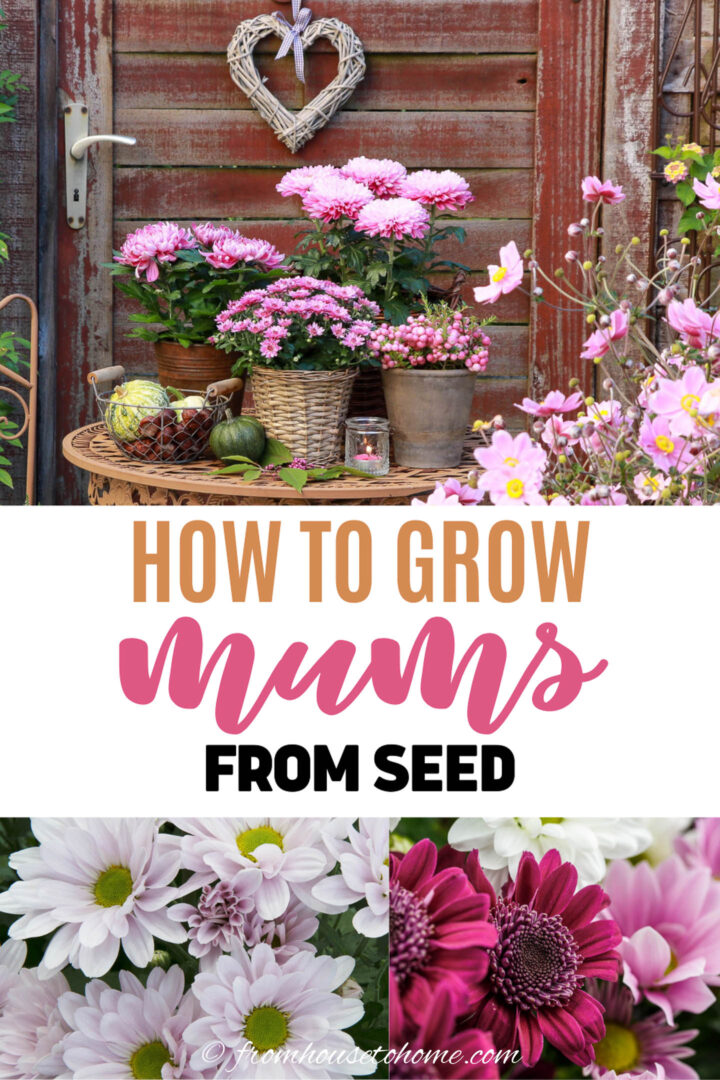
Growing Mums from seed is often the best way to get the exact colors and flower forms that you want.
About 6 weeks before the last frost date in the spring, start the seeds in pots using seed-starting soil and a fine mix of sand or vermiculite for drainage.
Moisten the soil before dropping the seeds on the top. They are very small! So you may want to put a few between your fingers and roll back and forth so that a few seeds sprinkle down at a time.
Then cover with a very thin layer of soil. And spritz with a water bottle to wet it.
Put the pots in a warm location with lots of light to get the seeds to germinate. And don’t forget to keep the soil wet with your water bottle. (Don’t use a watering can since the flow of water can wash the seeds out).
If you end up with more than one or two seedlings per pot, snip off the extra ones when they are an inch or two tall to give the remaining plants the best chance to survive.
The plants should be kept inside until a couple of weeks after the last frost date for your area to give the seedlings time to get a good start.
Then transplant them into a bed or container where they will be blooming with other perennials.
Watering your new Mums regularly is important even when conditions are ideal to keep them growing well.
How to care for Mums
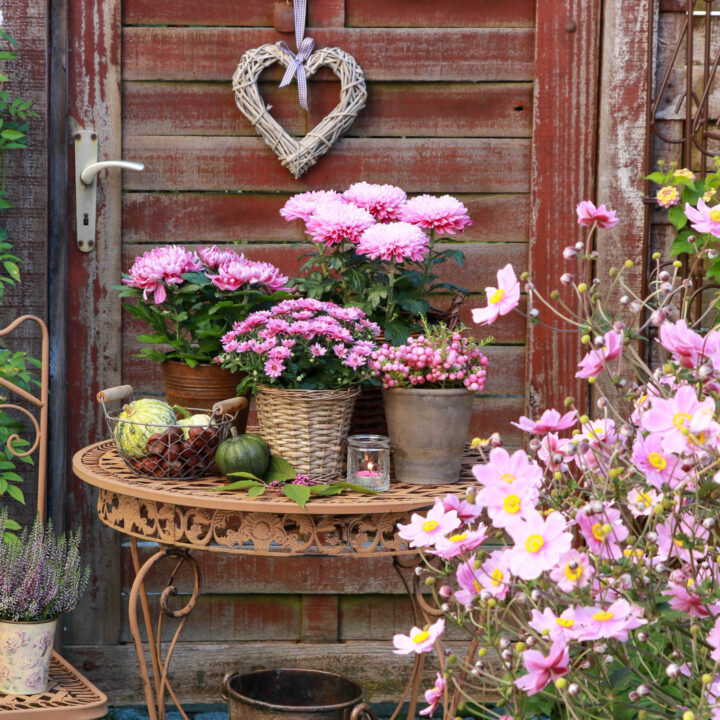
Watering
Care for your chrysanthemums by keeping them well watered until they are established.
After the first season, they are actually quite drought-tolerant and can survive through very dry conditions (although it may affect their flower production).
For the best blooms, Mums will need at least 1 inch of water per week, and more in hot or sunny weather.
Pruning
In the spring, remove any dead stems and leaves, and cut back the remaining stems to about 2″ above the ground.
To prevent them from getting too woody and leggy, pinch them back again when they reach about 4″ to 6″ tall. This encourages new growth, which leads to more blooms in the fall.
Then in the fall, deadhead the flowers (remove the faded blooms) as they fade to encourage new buds, resulting in more flowers for you to enjoy.
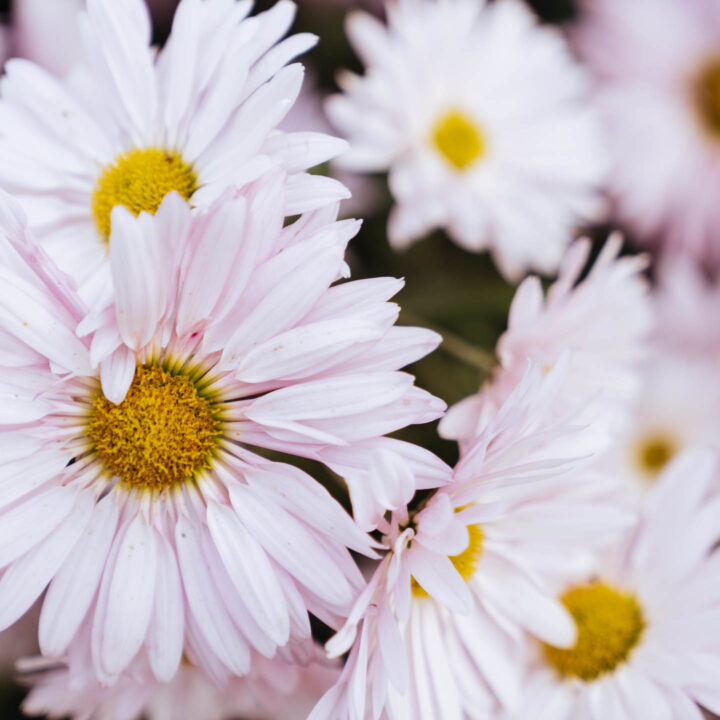
Fertilizing
Mums do not need to be fertilized very often. I have a couple of plants that have been growing (and blooming) in the same pots for 5 years without any fertilizer at all.
However, you will get more blooms if you apply a balanced fertilizer once a month until the middle of summer.
I like to use liquid fertilizer for pots (such as Miracle Gro) but the granulated kind works well, too.
Common Pest Problems
Mums are generally not bothered by too many pests, but they can include aphids, slugs, and thrips. Fortunately, all of these are relatively easy to control.
Slugs
The best way to get rid of slugs is by sprinkling sluggo around the plants or putting out a dish of beer for them to drown in. You can find more methods of controlling slugs HERE.
Aphids and Thrips
If you have aphids, you’ll see these tiny insects along the stems and leaves. They’re pretty easy to control by spraying a light mixture of soap and water onto the plant or a stronger insecticide if your infestation is bad.
You can also use a few drops of dish soap and water along with a drop or 2 of peppermint oil to form an insect repellent spray that will discourage insects from eating them.
Common flower types
There are more than 25,000 chrysanthemum varieties in existence today!
But they are often sold by flower shape and color, rather than specific varieties.
Look for the following flower shapes to add interest to your fall garden.
Spider Chrysanthemums
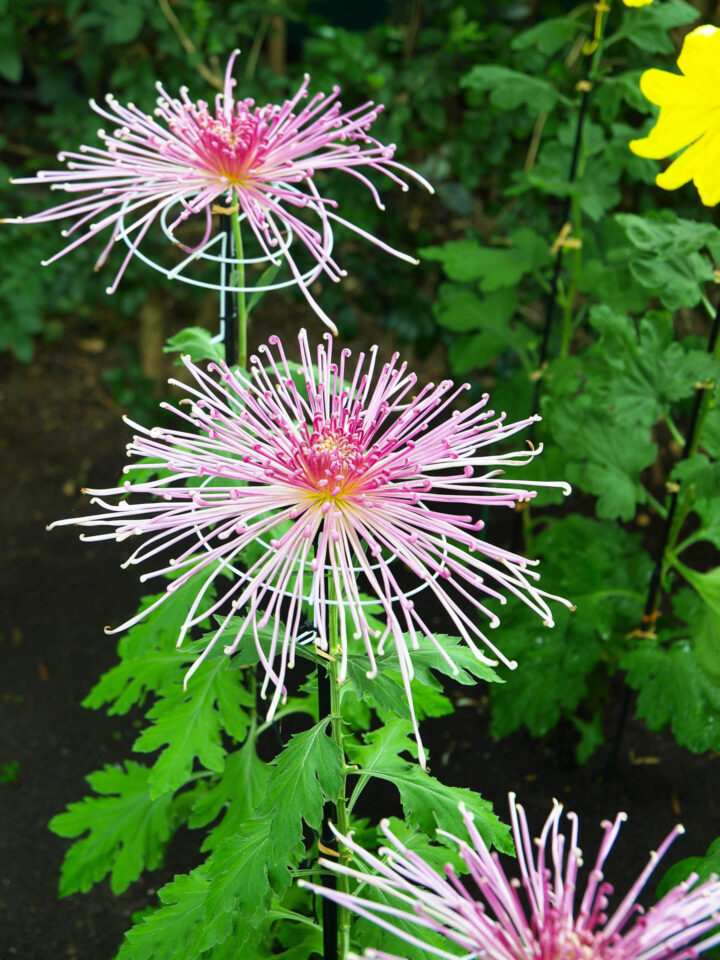
Spider Chrysanthemums get their name from their very distinctive flower. The petals are long, tubular, and often hooked at the ends that look very much like spider legs.
They are hardy mums that are perennial down to zone 5 and make excellent cut flowers.
However, they can be hard to find and often need to be grown from seed.
Cushion Chrysanthemums
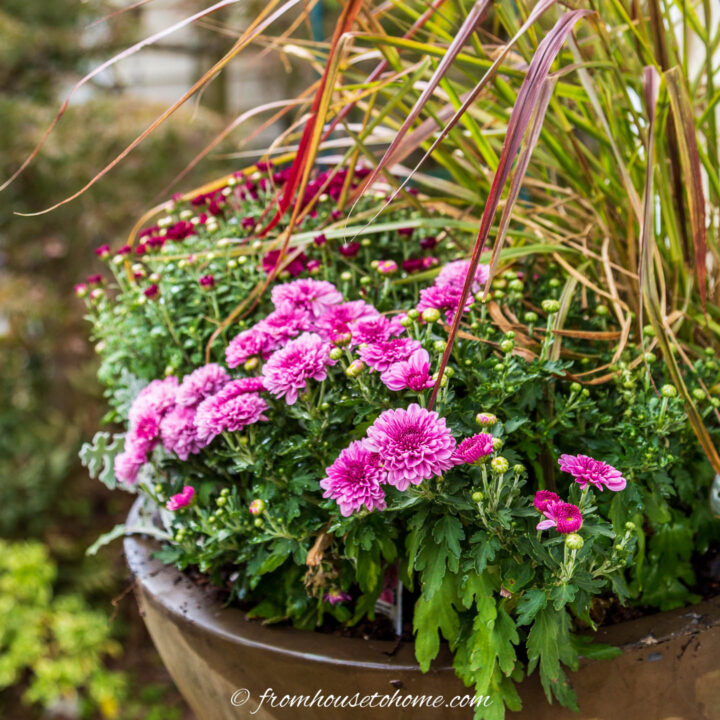
Cushion Mums are extremely popular among gardeners, and for good reason. These mums have soft, large, ruffled petals that form a blooming mound on top of the plant.
The color combinations and variety of sizes to choose from make these plants very versatile in your fall garden or container.
Single (or Daisy) Mums
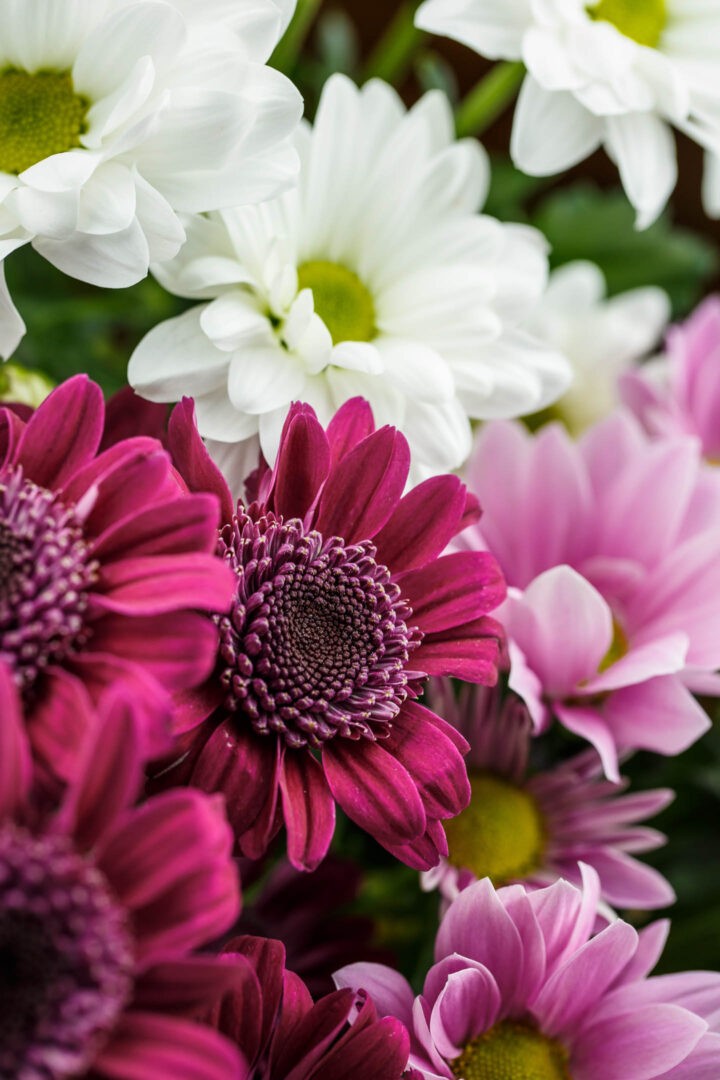
Daisy Chrysanthemums have a central disc that is surrounded by a ring of petals. The petals may be all one color, or there can be some stippling in the center and on the petals.
These are also perennial to zone 5 and make excellent cut flowers.
Quilled Chrysanthemums
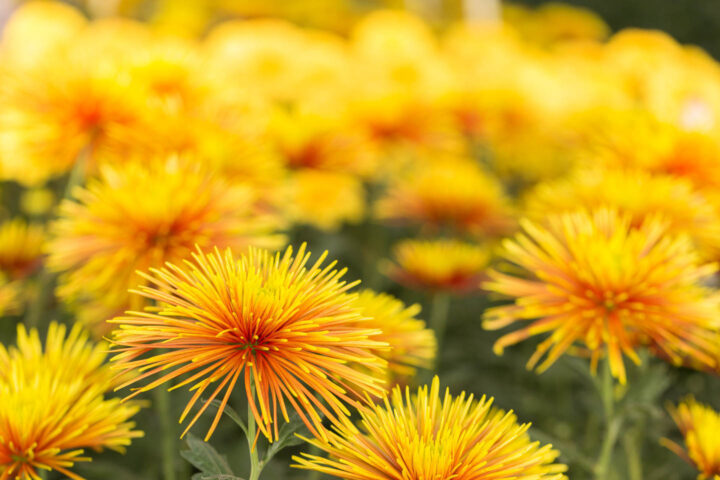
As the name suggests, Quilled Mums have very thin petals that look like little spikes and often have a small cup at the end.
Many have very pretty two-toned flowers that really stand out in a bouquet.
Enjoying Indoors
Cut flowers
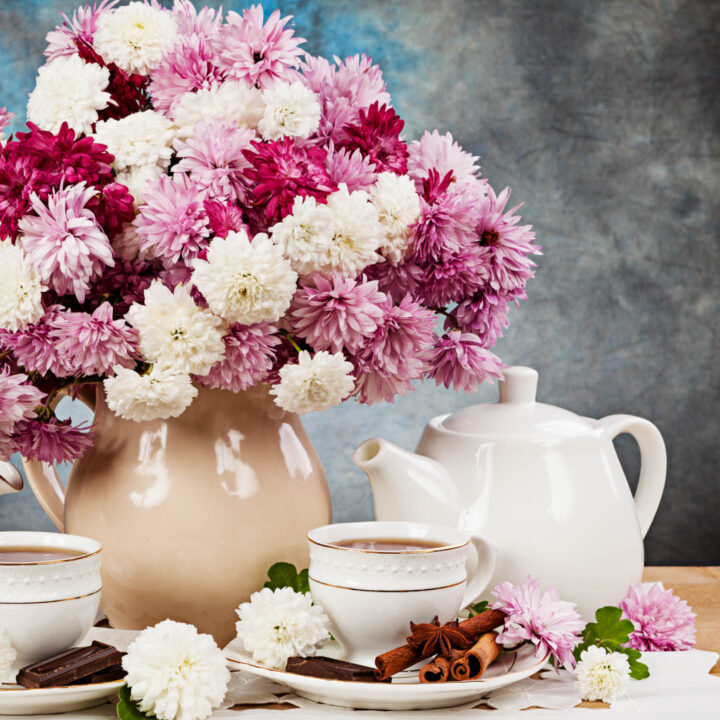
As you probably know from seeing flower bouquets from florists and at the supermarket, Mums make great cut flowers.
They can last up to 3 weeks in vases, giving you lots of enjoyment from your garden.
Cut the stems on an angle to give the most surface for moisture to be absorbed and put them immediately into a vase with water.
If the flowers begin to wilt, you may be able to revive them by cutting an inch or two off the bottom of the stems.
Dried flowers
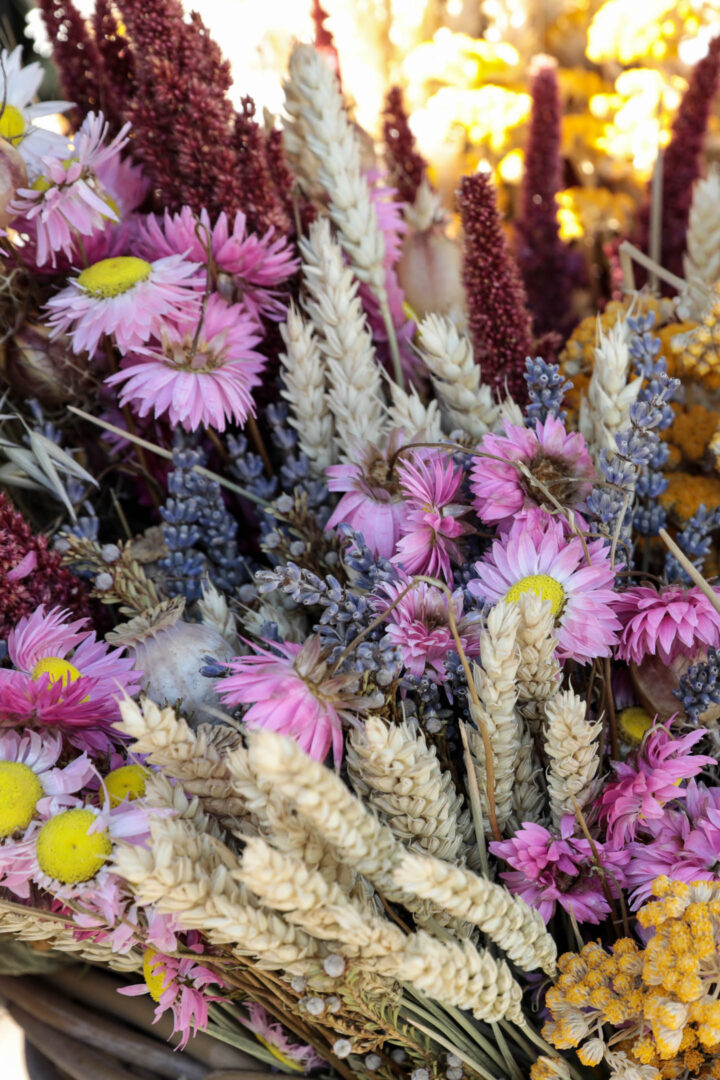
Mums are also some of the best cut flowers for drying too!
If you want to dry them yourself (which is super easy), just follow these simple steps:
- Clip off any dead or loose leaves and stems.
- Group the flowers together in a bunch and tie a string around the end of the stems
- Hang upside down in a closet or cabinet where they won’t be disturbed or get much light. Exposure to sunlight will cause the color to fade.
- Once the flowers are completely dry (this usually takes 2 to 3 weeks), they’re ready to use.
More flower guides
- The best plants for fall flowers
- The best bulbs to plant in the fall
- How to grow fall-blooming Japanese Anemones
Do you have comments or questions about how to plant and grow Chrysanthemums? Tell us in the section below.
This post was originally published on August 17, 2021 but was updated with new content on September 13, 2023.


